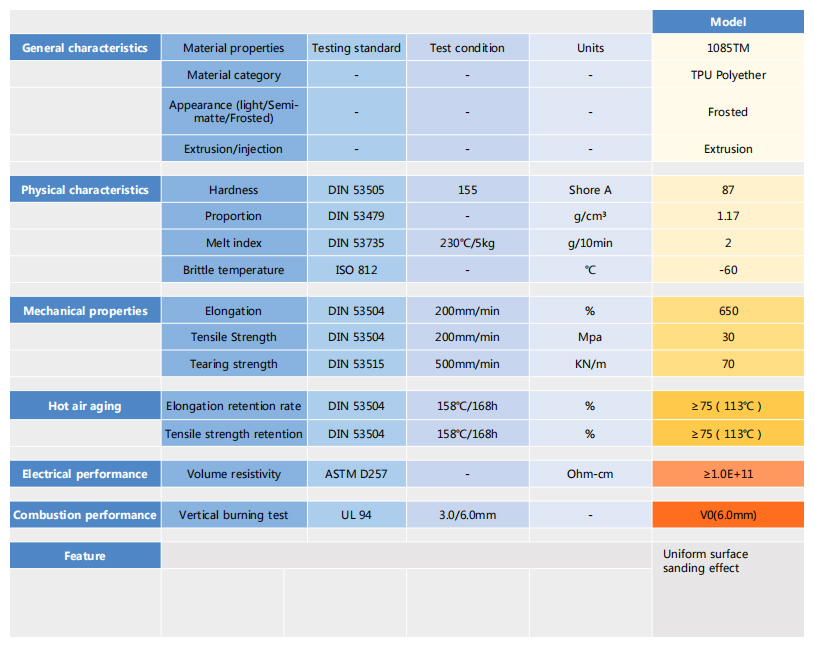1. The innovative flame retardant formula, greatly improves the long being problem that, the smoke density and light transmittance of the conventional halogen-free flame retardant TPU in the cable sheath application fails to meet the requirement of the test. (The density of non-flame smoke is 152, the density of flame smoke is 69).
2. Extreme temperature Resistance:
Supporting cable products passed high and low-temperature cycling test at -50℃~125℃ and rigorous low-temperature winding (-50℃) and low-temperature impact test (-50℃).
3. Excellent wear resistance:
polar materials, high cohesion, abrasion resistance significantly superior to conventional low smoke halogen-free polyolefin materials (LSZH);
4. High mechanical properties:
Tensile strength (≥15Mpa), tear strength (≥40N), and modulus of elasticity are significantly superior to the traditional low smoke halogen-free polyolefin (LSZH), which is more suitable for high-standard military and aerospace cable applications.
5. Hydrolysis resistance:
As one of the leading thermoplastic polyurethane suppliers, our products supporting cables pass 1000/2000 Hrs hydrolysis resistance test (85℃/85%RH,1000/2000Hrs);
6. Grinding (frosted) appearance:
even and fine grinding (frosted) surface, not only endow a higher-grade texture but also meet the
extinction requirement for the military.

1. UL yellow card certification V0 grade polyether TPU, fully support cable/optical cable pass the UL 758/1581 VW-1, IEC 60332 single vertical combustion test;
2. One of the very few TPU materials on the market can pass the 0-1 grade mold resistance test of the Chinese Military Standard (JGB 150.01A) (test reports attached);
3. Extreme temperature resistance:
Supporting cable products passed high and low-temperature cycling test at -50℃~125℃, rigorous low-temperature winding (-50℃), low-temperature impact (-50℃) test, etc;
4. High wear resistance:
polar material, high cohesive energy, excellent wear resistance than conventional low smoke halogen-free polyolefin material (LSZH low smoke zero halogen material);
5. Hydrolysis resistance:
Supporting cables pass 1000Hrs hydrolysis resistance test (85℃/85%RH, 1000Hrs);
6. Grinding (frosted) appearance:
even and fine grinding (frosted) surface, not only endow a higher-grade texture but also meet the extinction requirement for the military.
